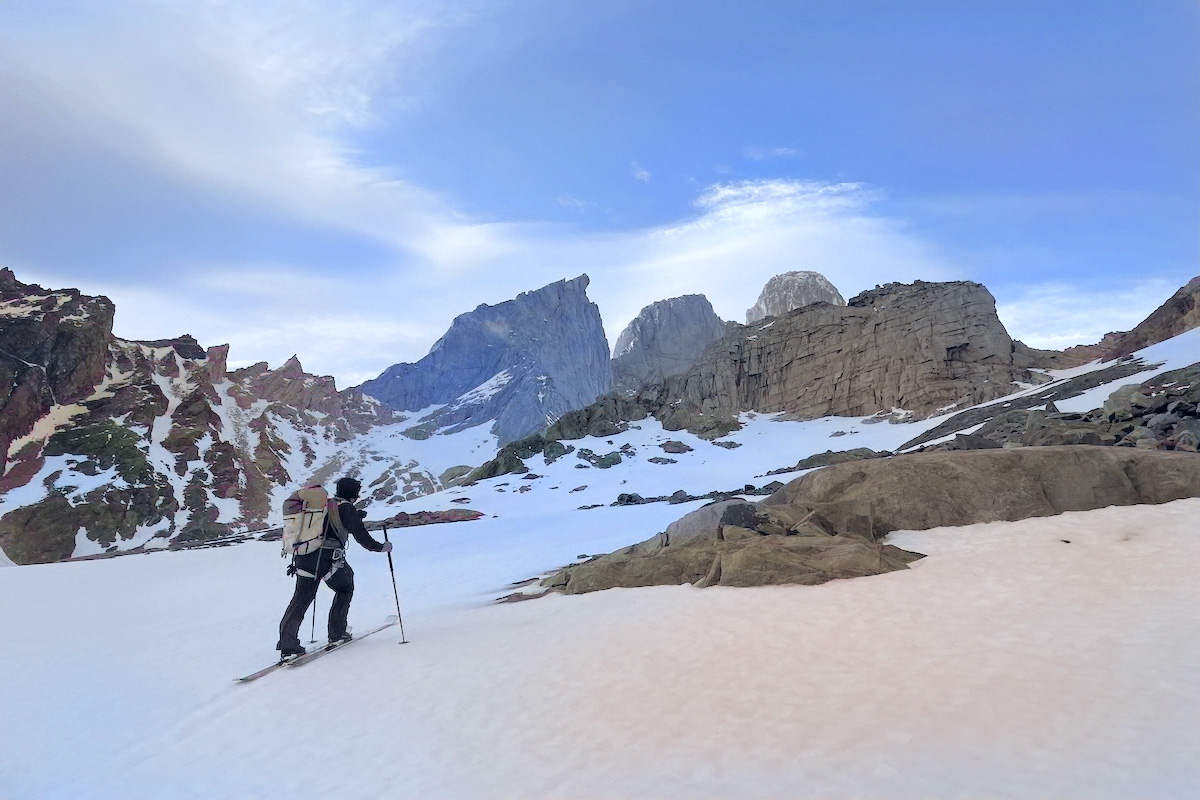
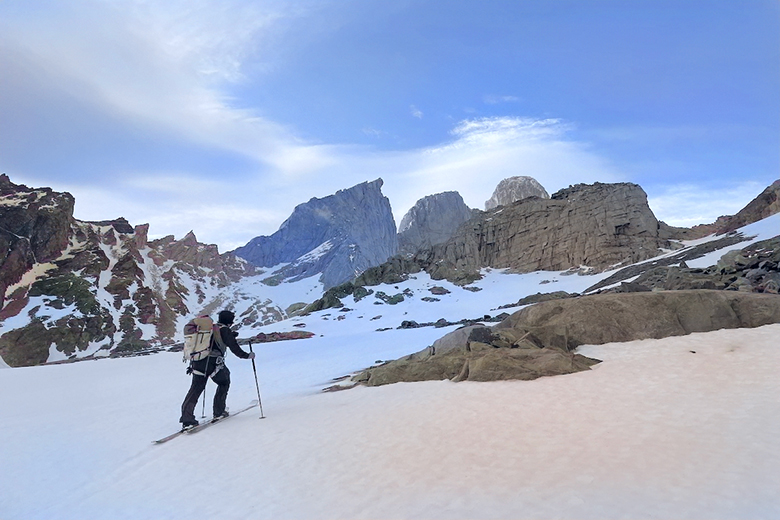
Price: $900
Weight per pair: 1145g
Flex: 95
What we like: High range of motion and a delight on the uphill.
What we don’t: No women's option, and a small durability issue with the powerstrap anchor.
See the Unisex Scarpa F1 XT
The original Scarpa F1 amassed a loyal following of light-and-fast ski mountaineers almost overnight, as it was the race boot. The Alien RS was a lighter-weight version of the original F1, which then morphed into the F1 LT, and now weighing an additional 70 grams: the F1 XT. When Scarpa announced the F1 family was breeding to meet the specific needs of skiers who like to walk far and ski hard downhill, you could say we were pretty psyched. With a 72-degree range of motion and weighing 1145g, the F1 XT isn't a race boot, but it is one of the top lightweight boots on the market. Below, we outline our experience with the F1 XT on a near-four-month trip to the Argentine Andes. The newest addition to the F1 lineage didn't disappoint. To see how it stacks up to the competition, check out our guide on the best backcountry ski boots.
Unsurprisingly, the Scarpa F1 XT walks like the race-inspired boot it is: low-friction, high-flexibility, and stellar comfort. If you like the F1 LT, these walk just about the same: solid companions in the skin track as well as on fourth- and fifth-class terrain. While Scarpa added some weight to the previous F1 LT to create the XT, these are still true uphill champions. If you're typically one who likes rando-style boots but are seeking a little more support for the downhill, these boots should be on your shortlist.
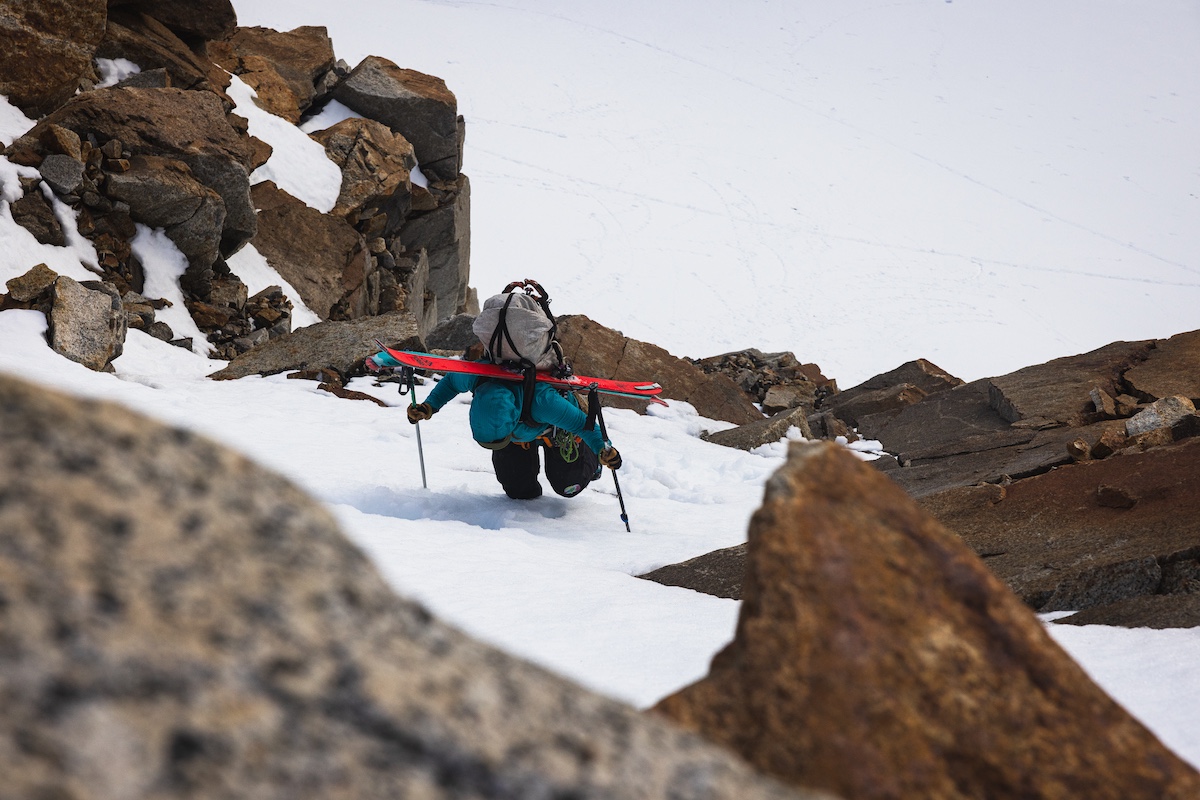
The 72-degree range of motion is actually a larger range of motion than the human ankle can produce, so you can plan on being unencumbered on the bootpack, skin track, or any other endeavor with these on your feet. Resistance within that range of motion was quite low, making the uphill feel natural. The typical F1 Vibram rubber sole once again is stickier than the average ski boot, keeping things secure even on wet granite slabs. Even with the 70-gram increase in weight from the LT, the uphill efficiency on these boots will help you save energy to enjoy the downhill—with even more support due to the additional buckles.
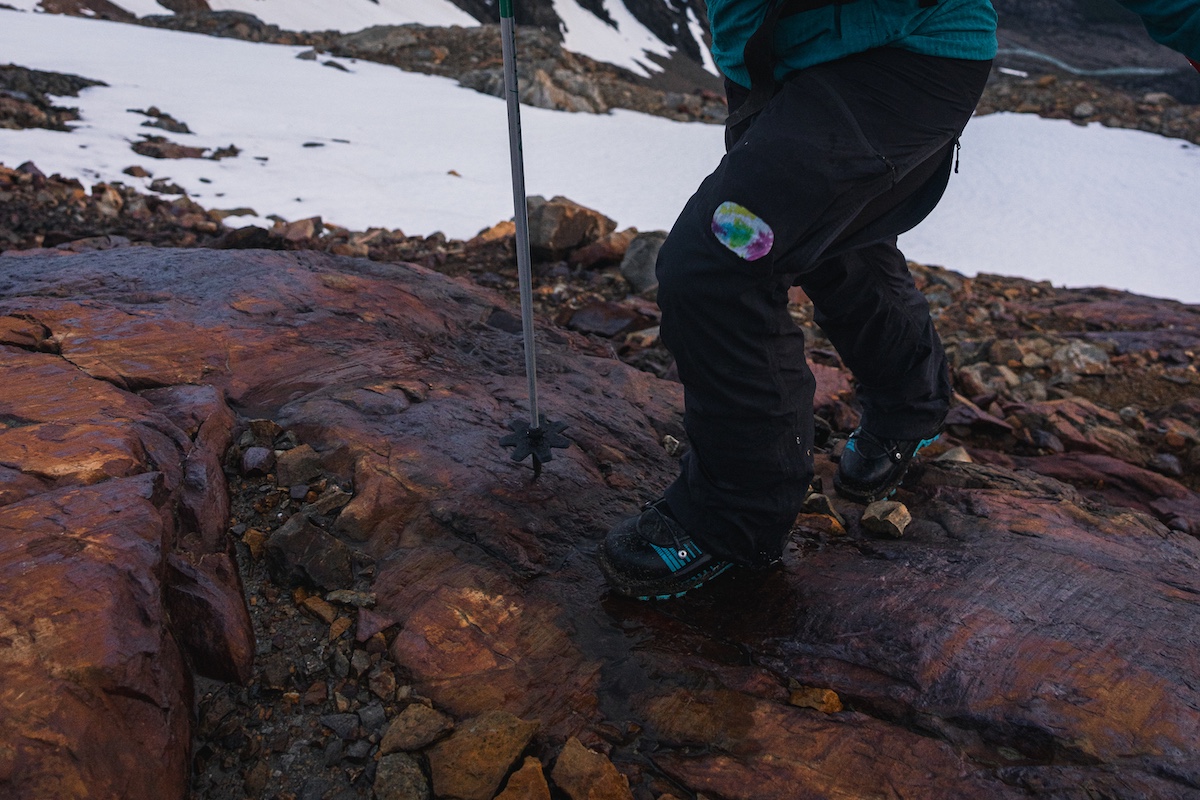
The F1 XT was designed as a higher downhill performance version of the F1 LT, and we think it delivers on that promise. The two buckles swapped in for the LT's Boa make a huge difference on the downhill. While the XT has an advertised flex of 95, which is technically softer than the LT's 100 flex according to Scarpa, it's important to note that the flex of boots in the 1000g category is often hard to compare or rate accurately. The XT certainly has a more progressive and stiffer downhill flex than the LT. The boots handled dreamily for a lightweight boot on skis up to about 102 underfoot. Black Crow Camox Freebirds were a perfect pairing for me on my trip (96 underfoot), but skiing them with Salomon QST Echos (106 underfoot) felt a bit like a stretch. Even on the often wind-textured, variable, and breakable snow surfaces of Patagonia, they were reliable and trustworthy downhill companions. With skis much wider, we'd recommend a slightly beefier boot, but chances are you aren't looking for a 1kg boot if you want to primarily ski your pontoons.

The Scarpa F1 XT weighs 1145g (2lbs 8.39 oz). While this is on the heavier side for a race boot, the 70g increase from the F1 LT is worth the downhill performance upgrade—even if the flex does not reflect it. These aren't going to ski like the heavier Zero G Tour Pro, but they also don't bring the same weight. They also won't be the lightest weight boot of the lightweight boot class, but we do think the XT is the best balance of weight and performance in this class.
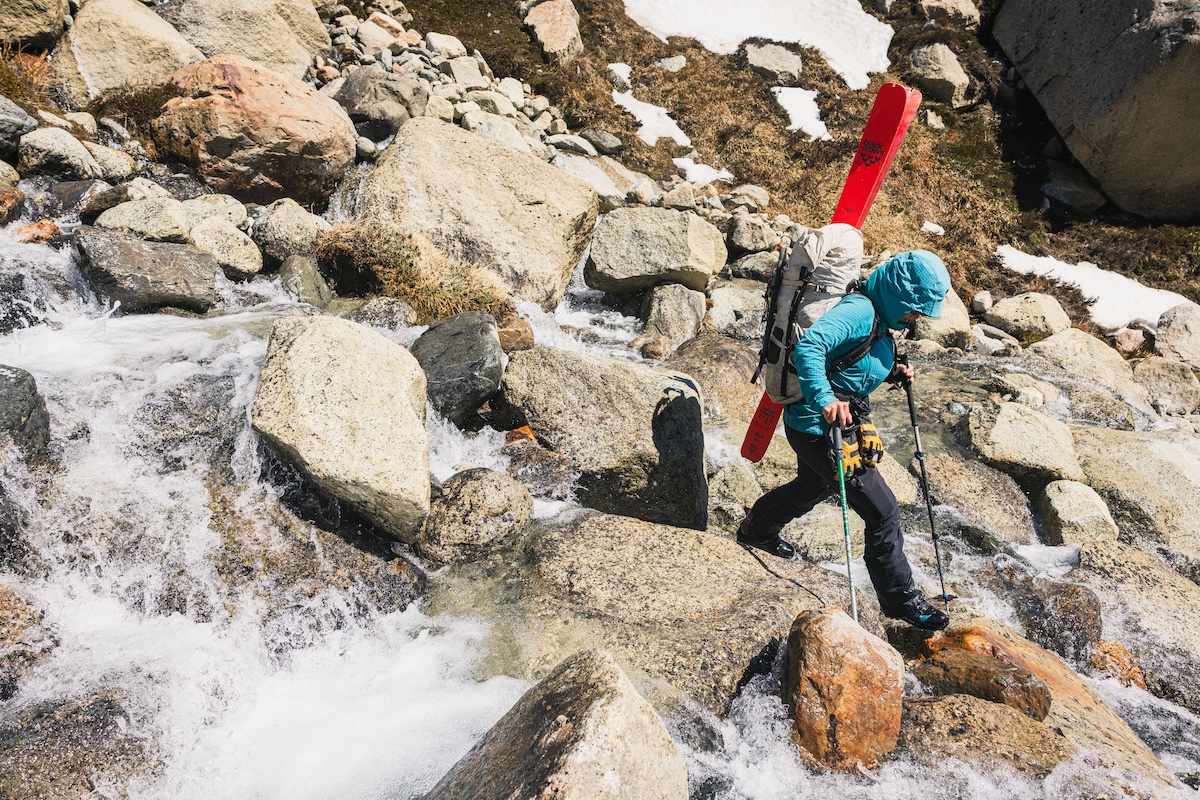
The F1 LT used one Boa and a velcro-adjusted buckle, along with a pretty small velcro power strap to lock in your feet. Slightly closer to more traditional downhill boots than the LT, the F1 XT utilizes Scarpa's Wave Lite closure system on the lower part of the boot. This cable-closure buckle essentially functions as two buckles, tensioning the boot over the top of your foot in two places. Higher up on the boot is one traditional buckle, along with a metal clamp power strap that's much beefier than the LT's. Given how lightweight and minimal the design of this system is, the XT buckles do a good job of locking in your heel despite the loose fit, with the top buckle providing a progressive, supportive flex and power transfer on the downhill.

The ski/walk lever on the F1 XT isn't anything new, but we're big fans of the "if it ain't broke, don't fix it" mentality—and that applies to this mechanism. Similar to Technica's T-Hike mechanism on the Zero G Tour Pro, the pocket in the lever, as well as the bar it attaches to on the spine of the boot, can accumulate snow/ice during uphill travel. However, this is pretty standard for mechanisms in winter environments and is easily addressed with a narrow scraper, a knife, or simply clicking your boots together—not a notable downside to me. Going from walk to ski mode is technically a four-step process: the lever, both buckles, and the power strap, which isn't the most efficient. Four might be more than the advertised 1-step transition for boots like the Dynafit Ridge Pro, but it's quick and simple, unlike the Hoji-lock, which usually takes more steps/finagling than advertised.
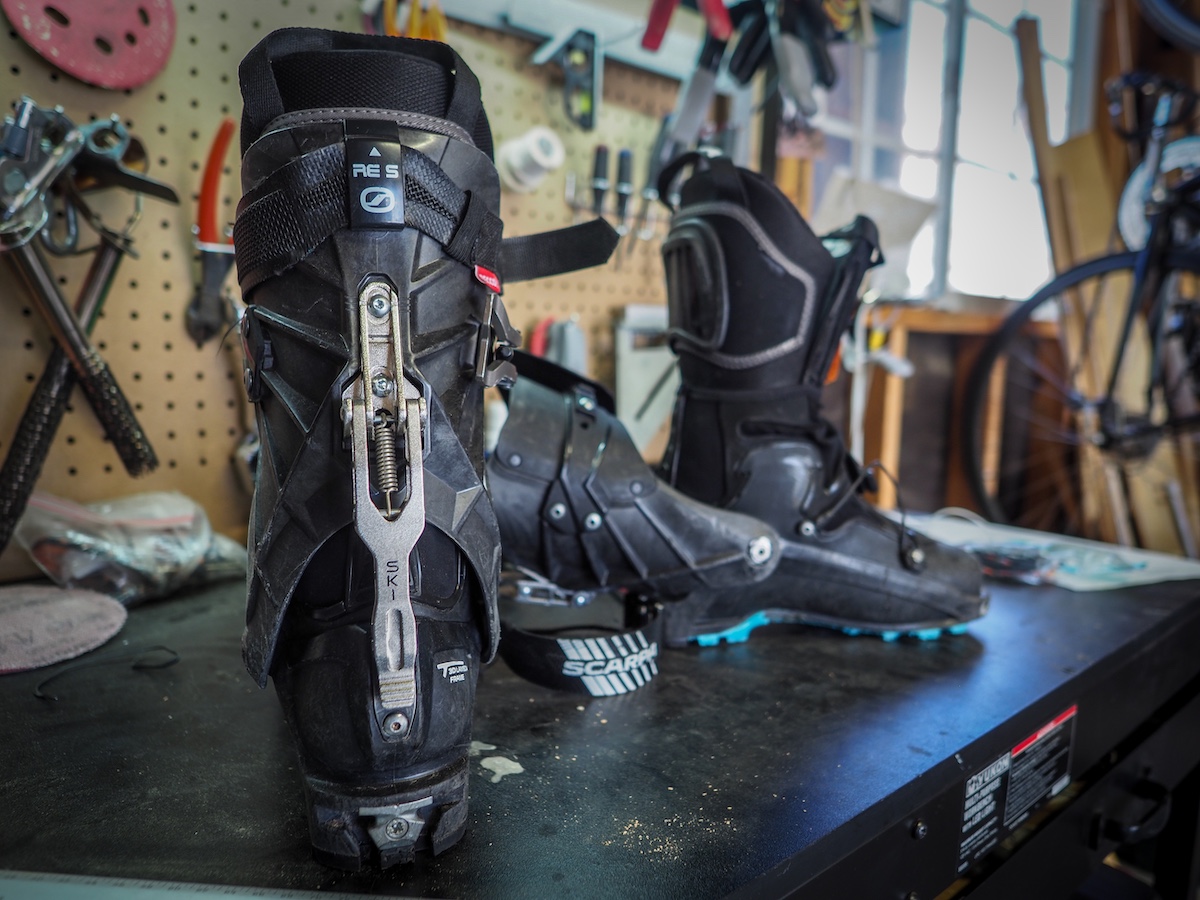
Scarpa uses the Intuition Crossfit Tour LT2 as the stock liner for the XT. With liners, we look at durability (how quickly the liner packs out), warmth, and performance. The performance of the liner is top-notch out of the box: stiff upper and tongue, good moldability even without heat molding, and even an optional and adjustable spoiler on the back of the calf for more forward lean. This being said, the durability of the liner is similar to other F1/Intuition combos, where they perform well for about 40 days, and after that, they start to feel a bit loose and packed out. As far as warmth goes, as with any lightweight boot, they are not the warmest option. They are plenty warm moving throughout the day in the mountains in most temps, with the constant motion they were designed for. If you're planning on going on an extended expedition at a higher altitude or standing around to teach avalanche courses, you should think about the loss of warmth, primarily while being a bit more stagnant.
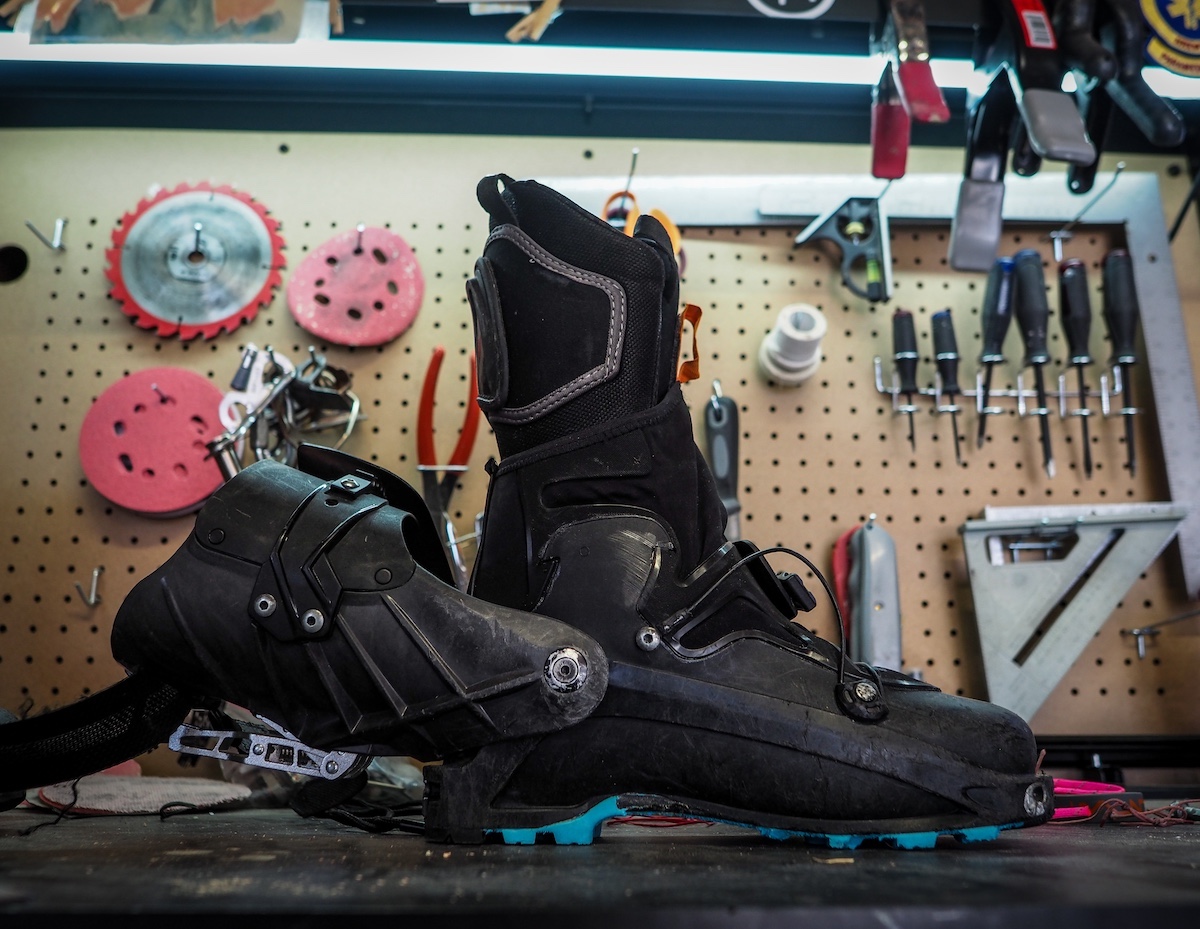
When we're talking about durability, it's important to know that any 1kg boot is not going to last as long as a beefier, hybrid touring boot like the Scarpa 4-Quattro XT. This is simply because of a materials: making hard goods out of lighter materials naturally takes some form of tradeoff for durability—it's a matter of how significant. Although the build is pretty much identical, the soft boot gator on the XT actually held up better for me than on the LT, where I was able to rip holes from the repetitive motion of walking in the boots. Other than that, the boots held up nicely for their class.
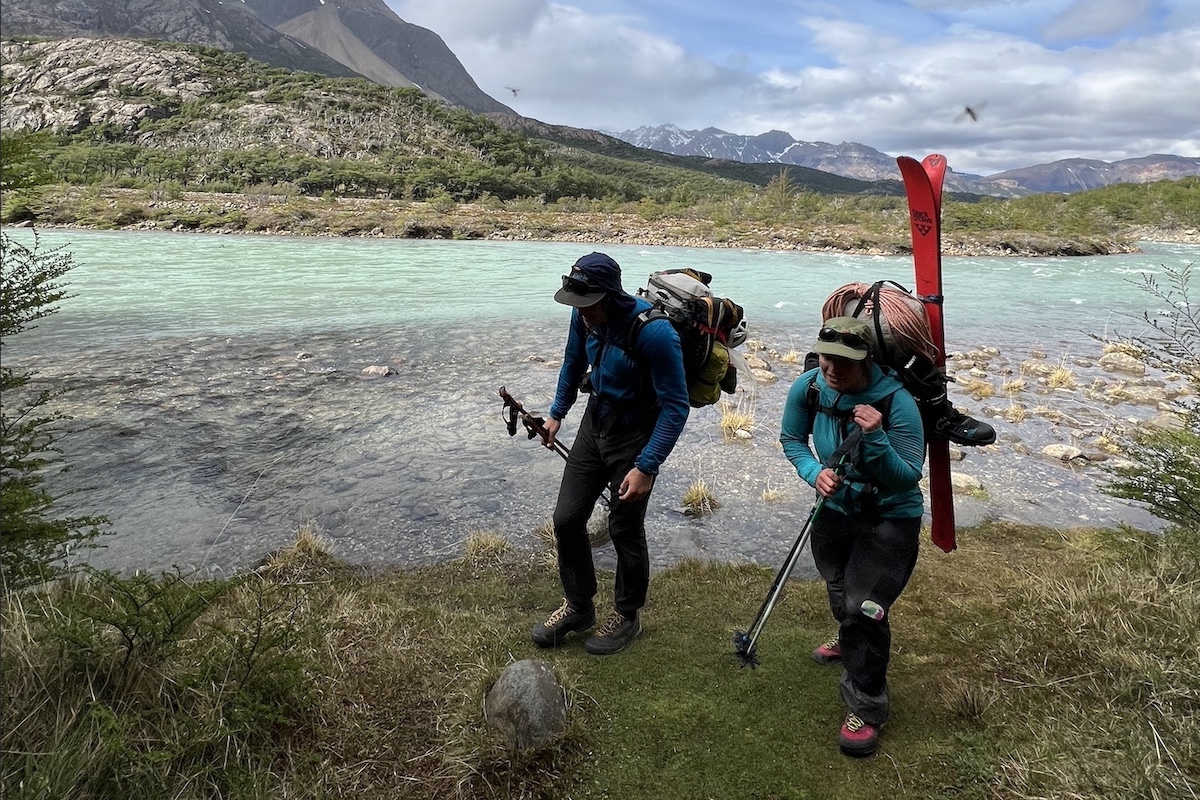
The one major design/quality oversight in my eyes is the use of a single plastic button to affix the power strap to the boot. If you like to carry your boots draped over the top of your pack via connected power straps, as you see above, we found the button would frequently pop out of the boot, sending both toppling down whatever approach you're on. Luckily, we found this out early in the trip on a non-consequential approach, so we found a solution with a climbing sling and a single carabiner.
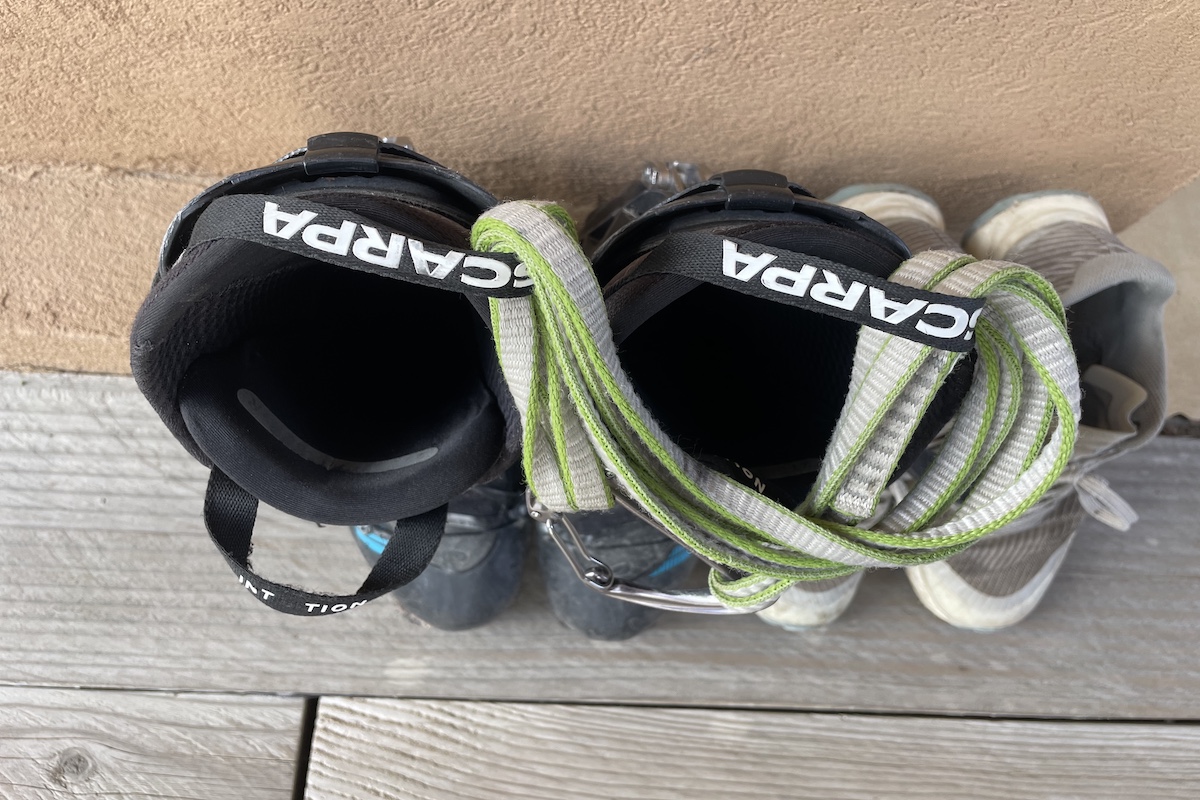
The XT is available in whole sizes, so I opted for a size 24. My standard mondo size is 23.5 and with the fit quirks of the F1 LTs, this size was spot on. The F1 XT has the same odd fit as the LT: a narrow toe-box with a wider-fitting heel. While this isn't my favorite fit, it works well enough for me. If the LTs worked for you, so will the XTs. For reference, I have a wider, low-volume foot that fits into the 100mm last out of the box. However, with some at-home boot work, I was able to punch out a couple of spots where I have some odd bone irregularities in the arch of my foot from an old break, and that made them more comfortable. We recommend taking your boots to a professional boot fitter at a local ski shop to dial in the fit on your boots. The boot comes with a liner spoiler that is vertically adjustable for height, as well as removable. While it helped with forward lean for descents, I ended up removing it entirely due to the height of the boot cuff on the men's boot (more on this in the Women's-Specific Adaptations section below).

People of all shapes, sizes, and genders love backcountry skiing—and need high-performance gear. Particularly in high-performance and lightweight backcountry boots, many manufacturers don't offer a women's equivalent. This is okay for some women who are taller or have narrower calves and can fit into the men's boot, but for 5'2" folks like myself, the men's boots often don't fit. The women's offering of the original F1 was my favorite ski boot for a long time, so as the F1 series progressed, I hoped for new F1 iterations to also come in a women's model. While the three other current versions of the F1 (see below for more information on those models) are offered in women's-specific versions, the F1 XT unfortunately is not. This is in line with how many other brands treat women's-specific boots: often leaving the highest-performance downhill model as a unisex (men's) boot. Unfortunately, what this meant is that the F1 XT chronically chokes my calves, and while the liner packed out after a couple of months of use to be slightly more comfortable, they're not my favorite boots—solely because of cuff height. While removing the spoiler on the back of the liner helped, it didn't quite make up for the cuff height.
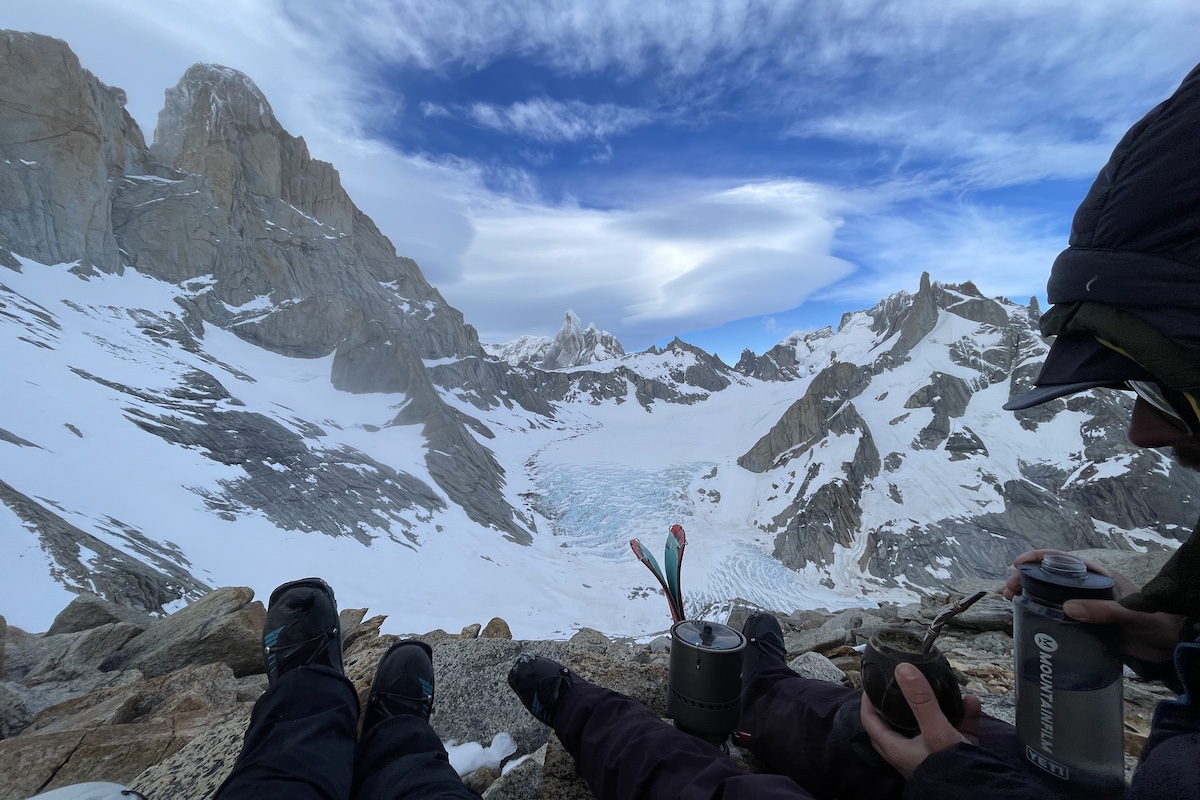
I tested the men's F1 XT for this review, but there are three other types of F1's currently on the market. These other three luckily come in both men's and women's versions, and the somewhat nuanced differences between the different species of F1s warrant an entire article itself. To put it simply: there is the classic F1 in a women's and men's model, which is a revised version of the boot that started it all. The F1 LT—for lightweight— is available in a women's and men's model, serving as the lighter-weight F1/beefier Alien RS that is the predecessor to the XT. And lastly, we have the F1 GT available in both a women's and men's model, which is essentially a heavier, slightly different-fitting, and softer version of the XT...which is being discontinued. Seem confusing? You're not alone. There are multiple forums and articles trying to hone in on the difference.
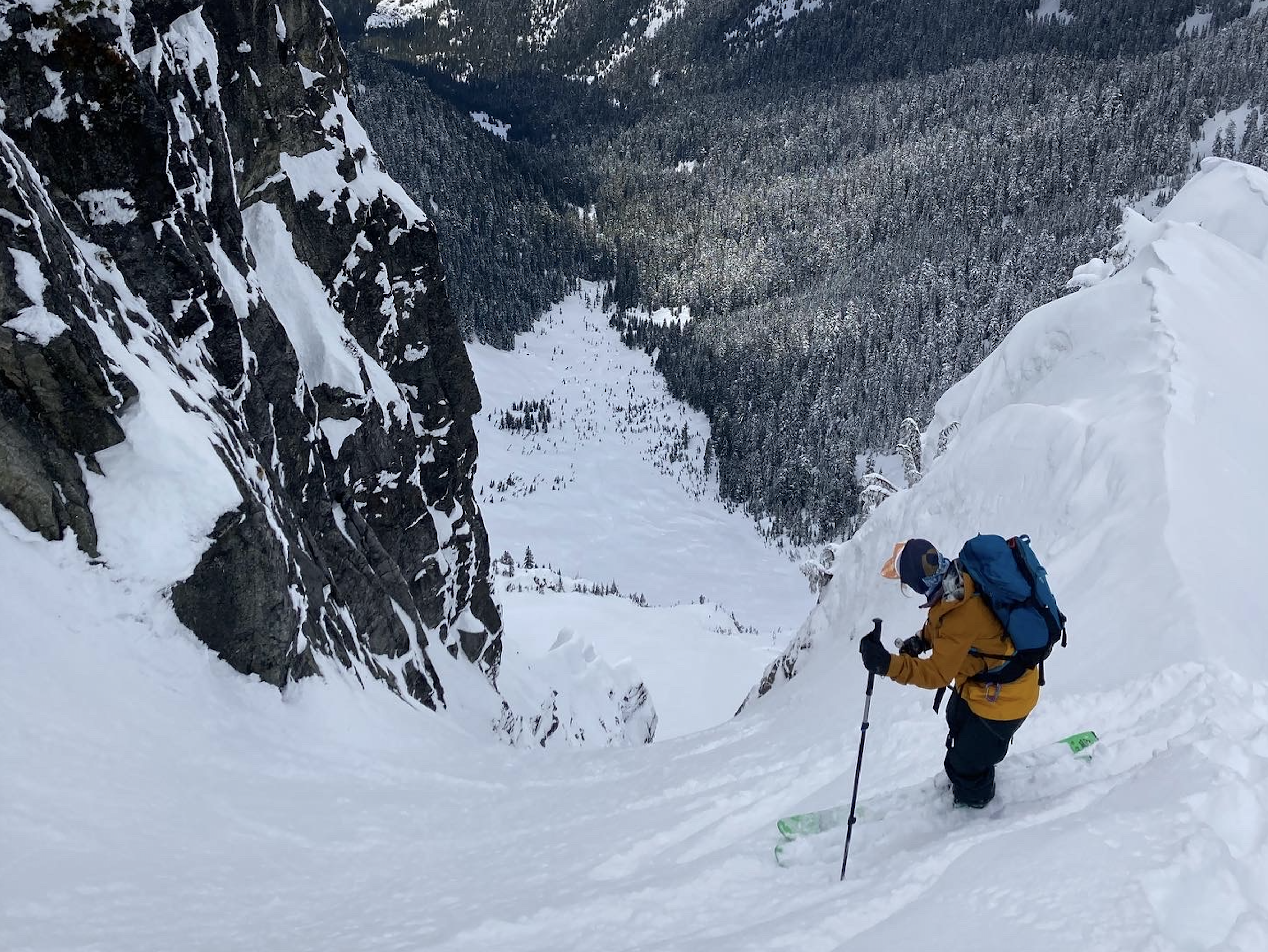
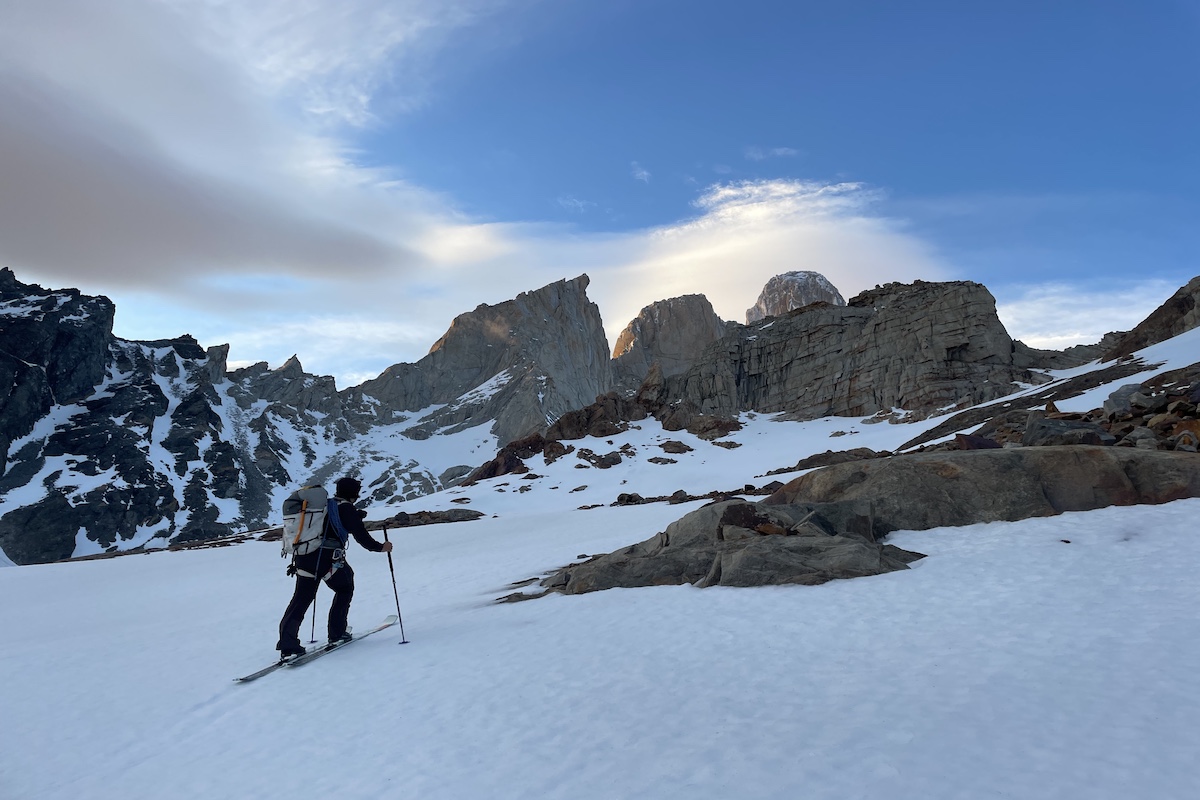
| Boot | Price | Mass (g) | Last | Flex | Motion | Shell |
|---|---|---|---|---|---|---|
| Scarpa F1 XT | $900 | 1145g | 100mm | 95 | 72° | Grilamid and carbon |
| Scarpa F1 LT | $949 | 989.4g | 100mm | 100 | 72° | Grilamid and carbon |
| Dynafit TLT X | $500 | 1030g | 101mm | Unavail. | 60° | Grilamid |
| Dynafit Ridge Pro | $900 | 1130g | 101mm | 110 | 70° | Grilamid and carbon |
The Scarpa F1 XT really blends together lightness and downhill performance, for a lightweight boot. In its class, the XT is a standout, but we'd be remiss if we didn't acknowledge it's competitors. As we've said before, the predecessor of the XT is the Scarpa F1 LT, which is a slightly more expensive, slightly lighter (989.4g vs. 1145g) version with less downhill performance (despite what the advertised flex implies). The most recent edition from the Dynafit TLT series, the TLT X, is more affordable than the XT by several hundred dollars, but with slightly lower performance yet more accommodating fit. The Dynafit Ridge Pro is Dynafit's attempt at turning the beefier, freeride Dynafit Radical Pro into a lightweight boot. At the same price as the XT, it has a slightly wider last, a higher downhill performance, a lower weight, and comes in a women's version. This being said, the Ridge Pro has it's own quirks, fit oddities, and differences on the up. You can read more about it in our in-depth review.
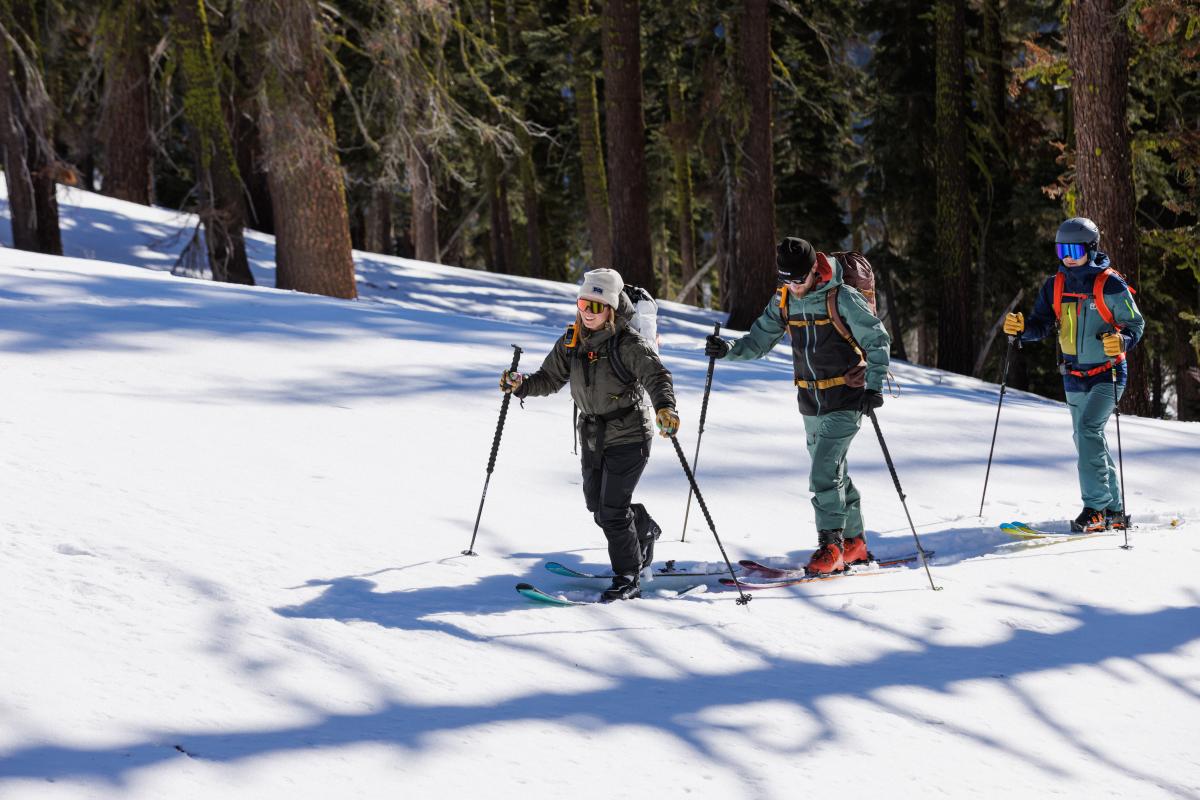
All in all, there are a lot of good boots in the lightweight boot class. Each of them come with their fit quirks—and you should prioritize what shape works best for your foot above all else. This all being said, if you're not looking for a women's-specific lightweight boot, and you want dreamy uphill and best-of-class downhill performance, we'd nudge you towards the Scarpa F1 XT.
Back to the Scarpa F1 XT Review See Our Backcountry Ski Boot Guide